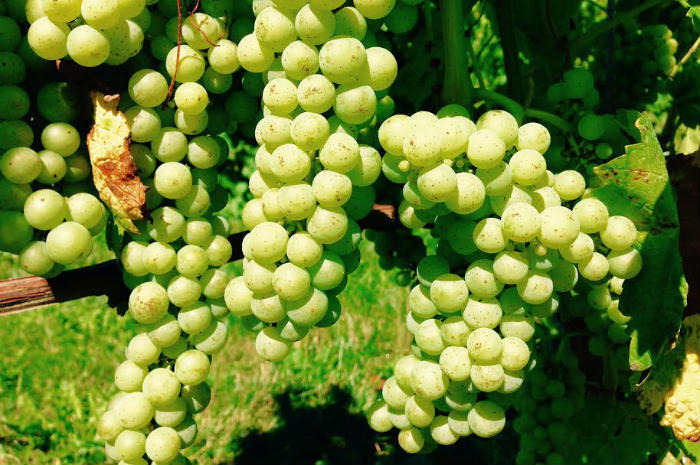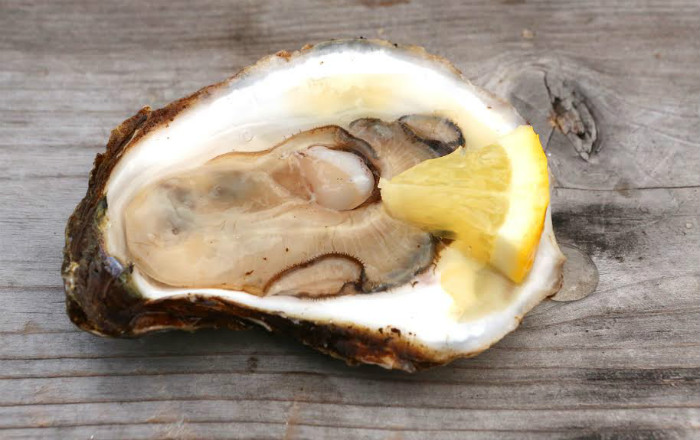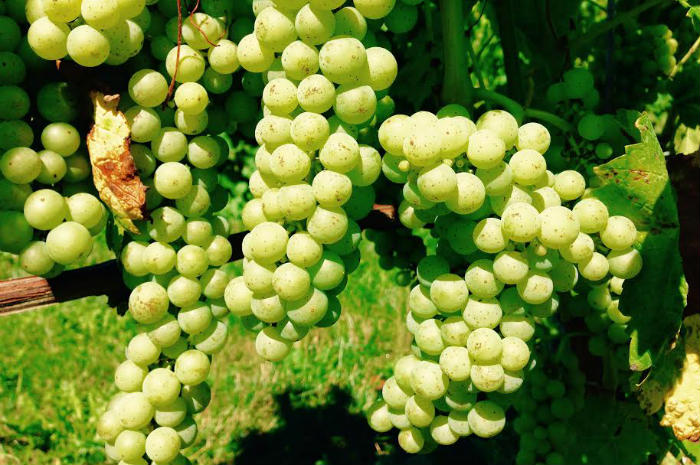Seafood, Wine, And Scenery: A Delectable Journey Through Southwestern Nova Scotia, Part 2
Lunenburg to Shelburne
The drive to Shelburne is quite scenic. The shortest route is across the LaHave River via a ferry with the same name. The ferryboat was pulled across the river by means of a cable—one of the oldest such devices of this kind in Canada.
One interesting diversion is the White Point Beach Resort situated on a 1 km sandy crescent beach. As we pulled in I noticed the sign that read: "Caution: children and bunnies are everywhere."
As it turns out, fluffy white bunnies make this their home, multiply as rabbits are known to do and roam the grounds freely. Most kids and adults love to watch them scamper around, and they even have bunny food available at the front desk.
The beach is one of the main attractions during the summer. The waters are suitable for swimming, but there is also a small pool on the grounds. The restaurant features a variety of foods—from simple to elegant—with many based on seafood traditional favorites.
Shelburne has a fascinating history. It was once the largest community of "United Empire Loyalists" in Canada during the American Revolution, as well as after the war ended with an American victory in 1783.
At one point the population reached 16,000 people, but later dwindled as the émigrés headed elsewhere. Today, it is a sleepy little fishing town, with many inhabitants being fifth-and-sixth generation descendants of those Loyalist refugees.
One of the highlights of any food-centric trip should be the Charlotte Lane Café, voted one of the best small restaurants in Nova Scotia in 2013. Its maestro of the menu, chef Roland, came to Canada from Switzerland more than two decades ago and ended up settling in Shelburne where he offers his own version of some of the province's finest cuisine.
I started with the dill salad with watermelon and buttermilk dressing and ordered the Caribbean chicken for my entrée. Both were well-prepared and one of the best meals I have had so far. For dessert, my recommendation would be the lemon panna cotta which was light and refreshing.
The Cooper's Inn is a comfortable location to spend the night and their motto of, "Where history meets hospitality" gives a nod to its Loyalist roots. The breakfasts here are sumptuous with several menu selections. I chose the scrambled eggs with fresh chives and bacon which was accompanied by a delicious fruit salsa.
This is the sort of place I love to recommend, not only for its charm and ambiance overlooking the water, but also because the innkeepers have an obvious love in providing a great experience for their guests.
Shelburne to Digby
From Shelburne, Highway 103 on the Lighthouse Coast brought us to the tiny community of Ste-Anne-du-Ruisseau, home to the Eel Lake Oyster Farm. The D'Eon family has been farming oysters in this brackish bay since 1996. Their popular hour-and-a half boat excursion lets adventurous tourist learn just how these popular crustaceans make it from the bay to the plate.
The best part of the tour, of course, is afterwards, when guests watch their guide shuck some of his catch and then are invited to sample a couple of these succulent Ruisseau oysters, which are considered to be among the finest in the world.
Rounding the southwestern-most tip of Nova Scotia, we came to Yarmouth and the Acadian Shores, so named because this region is rich in the history of the Acadians. These are descendants of the original French settlers here, and who, together with the First Nation Mi'kmaqs, had fought against expulsion from their homes when England established its dominance of Canada during the French and Indian War.
We stopped at a little restaurant in the Clare region called La Cuisine Robicheau, which features authentic Acadian cuisine. The flags with single stars that you see in front of many of the houses and businesses proudly proclaim their Acadian heritage.
We settled at simple tables next to windows overlooking St. Mary's Bay, and our waitress told us of the specials for the day. Almost everyone ordered the same thing—haddock with lobster sauce served with mashed potatoes, peas, and carrots. There was nothing but the sound of silence and clinking cutlery as we all concentrated on devouring this delicious food. Afterwards we sampled some of their award-winning coconut and chocolate cream pies.
I thought, "This ought to hold me for a spell."
Just up the road a piece is another great photo opportunity: the Catholic Church Sainte-Marie (Église Sainte-Marie). This church, constructed in the form of a cross and completed in 1905, is one the largest and tallest wooden buildings remaining in North America. The architecture is truly remarkable and I highly recommend a visit.
Being a professional food writer (with the pounds to prove it) allowed me to pack in another meal between lunch and dinner, this one at Evelina's and her famous rappie pies. Made from a mixture of fresh potatoes and beef, chicken, or clams, the pie is then baked for three hours giving it a nice brown crust. This little hotspot gets quite busy at mealtimes.
We continued northeast up the coast to Digby. A Loyalist town during the Revolutionary War and afterwards, this seafaring village was named in honor of its founder, Loyalist Admiral Robert Digby.
We ended the day's journey at Digby Pines Golf Resort & Spa. The signs coming into town let visitors know that Digby Bay is home to world famous scallops, which fishermen have been harvesting in these waters for generations. It is also a spot where you can watch the rise and fall of the tide in the Bay of Fundy.
The resort overlooks the bay and offers great views of the surrounding region. For dinner, as you would expect, scallops are offered prepared in several different ways—grilled, wrapped with bacon and panko-encrusted, and so on. If you love these little delicacies, here is where you will want to get your fill.
Digby to Wolfville
Along this coastal route, history lovers will want divert at Annapolis Royal, once home to the strong First Nations Mi'kmaq community and later to Europeans who first settled here in 1605.
Fort Anne National Historic Site, a well-preserved star fort on a location that had been fought over by the Scots, the French, the English and the First Nations since 1629, is well worth a visit. The fort's gun emplacements still stand lonely guard over the surrounding waters. St. George Street is one of the oldest in North America and is lined with craft shops and small diners.
One of the highlights of this part of our road trip was lunch at Hall's Harbour Lobster Pound.
My small group filed along the holding tanks filled with lobsters from small to extra large, and each made our choice. We then ordered our sides, and carted everything over to the cooking shed where we handed over our lobsters and then waited in the dining area for our meal to arrive.
Try to plan your visit to Hall's Harbor so you can see the dramatic difference in the bay between the high and low tides on the Bay of Fundy. The water drops or rises 40 feet, and this happens so rapidly that it is a sight to see.
Wolfville, about 62 miles northwest of Halifax, was our final destination for the trip. It is here that in 1755 the Acadian population of about 2,000 people were deported from their homes when the British soldiers took command of the area during the French and Indian War (part of the over-arching Seven Year's War between the British and the French).
One of Henry Wadsworth Longfellow's most popular lyric poems, "Evangeline, A Tale of Acadie," was inspired by this event.
Today, Wolfville is a college town with pubs, restaurants, and retails shops lining Main Street. It is also in the center of the province's "wine country." More than a dozen wine growers have vineyards in this area, several of which offer tours and tastings.
Among the most popular is Benjamin Bridges which produces the best-selling sparkling wine product in Nova Scotia called Nova 7. A light and refreshing blend of off-dry wines, this product promptly sells out quickly each season. Tours here are private and their website has details for the two tiers of tastings they offer
Luckett Vineyards is owned by entrepreneur Steve Luckett, whose background is in grocery. Originally from Nottingham, England, Luckett purchased land here to start his vineyard, and brought along an authentic red telephone box. Not only does he offer tastings and meals but anyone wishing to place a long distance call anywhere in North America can do so from the phone box, now located in the center of his vineyard grapes.
The three-storey Blomidon Inn was our final accommodation. Once the mansion of a ship magnate, today it has been restored and has all the amenities of a hotel with the charm of a bed & breakfast. Rooms are adorned with antiques, including four-post beds. Mine had a huge whirlpool bathtub and I was quite pleased to soak in that after the long walks I'd been taking during the last several days.
Dinner here was also fantastic, which is no surprise to TripAdvisor fans who gave this their #1 rating.
Back to Halifax and Home
The circle was now complete. After driving round the entire southern coast of Nova Scotia, it was time to head back to the airport and home.
In addition to all the great cuisine, I also learned that the people in this part of Nova Scotia are warm, friendly and hospitable. I was frequently greeted with a hello and a pleasant smile as I walked around the small towns that dot the landscape.
I bade farewell to the friends I'd made on this trip, thought about all the seafood I'd devoured along the way with nostalgic pleasure, and then settled back in my seat as my plane rose in the air to take me back to Colorado and cattle country.
Learn about Part 1 of Ron's Nova Scotia adventures here.


